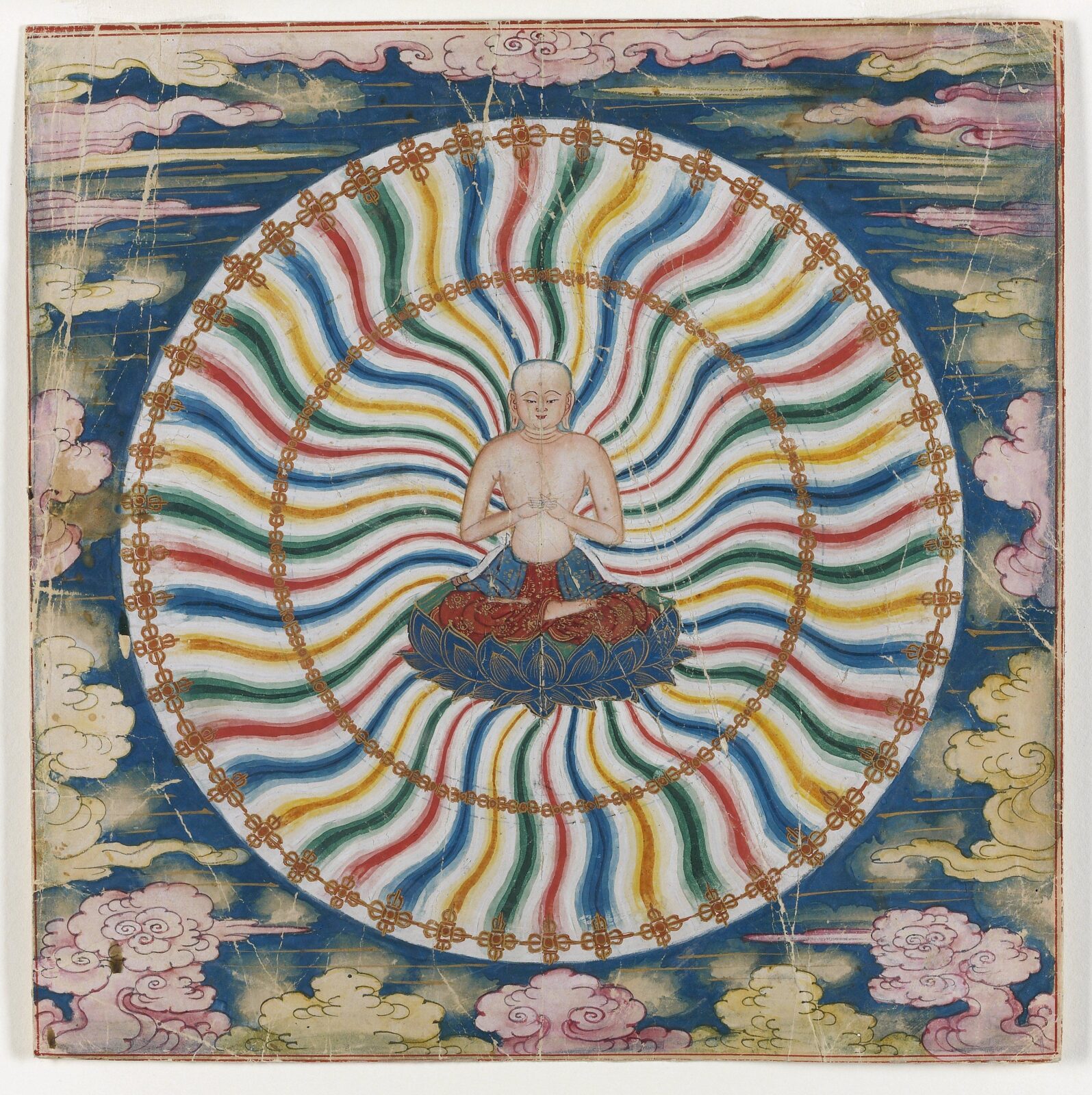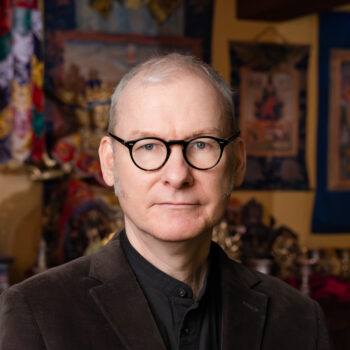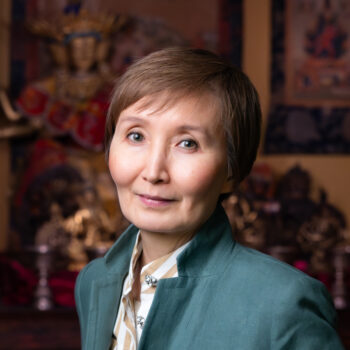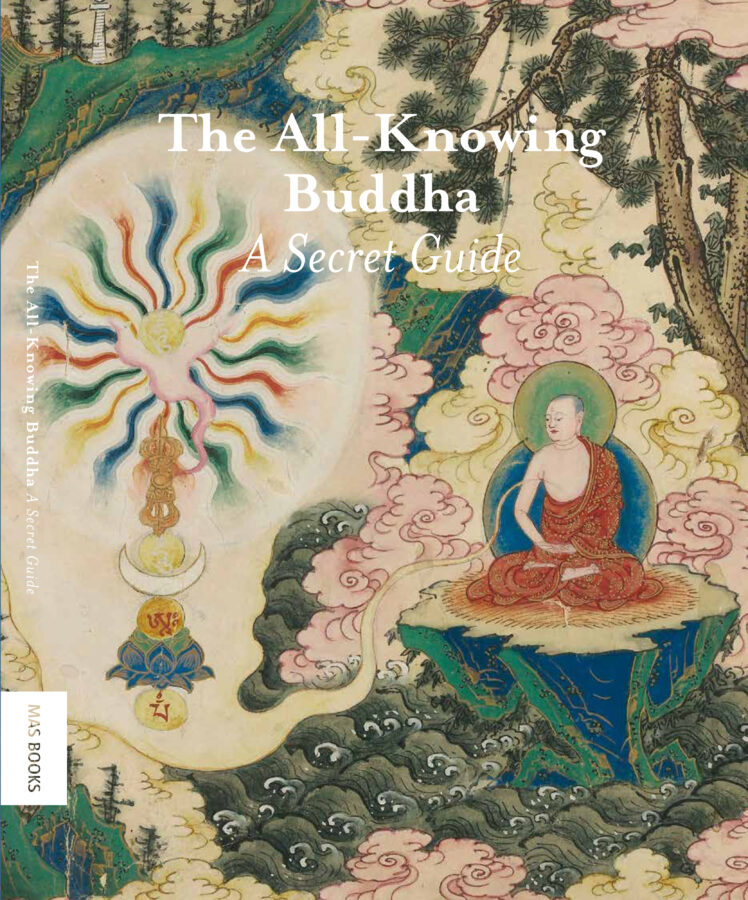The 54 richly detailed paintings provide step-by-step guidance to visualization of the Buddha Sarvavid Vairochana and offer unique insight into the meditation and rituals of Tibetan Buddhism. These practices are normally not meant to be depicted and are usually restricted to oral transmission by a teacher to his initiated disciple. The album is displayed at the Rubin alongside an array of sculptures and paintings that provide an artistic, religious, and historical context for Buddhist practices related to Vairochana.
On loan to the Rubin from the Museum aan de Stroom in Antwerp, Belgium, the album was first brought to the West in 1923 by a Christian missionary who acquired it from a Buddhist monastery in Jehol, Inner Mongolia. It is believed to have been commissioned by a Mongolian patron during the Qing dynasty (1644–1911), whose rulers sponsored extensive artistic production and supported Tibetan Buddhist monasteries. Drawing together Tibetan Buddhist content with the aesthetic traditions of Qing-era Chinese art in Inner Mongolia, the album exemplifies the rich patterns of cross-cultural exchange that characterized the period and region.
Support of this exhibition has been provided by the E. Rhodes and Leona B. Carpenter Foundation, Ellen Bayard Weedon Foundation, and by the 2013 and 2014 Exhibitions Funds.



